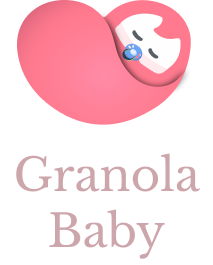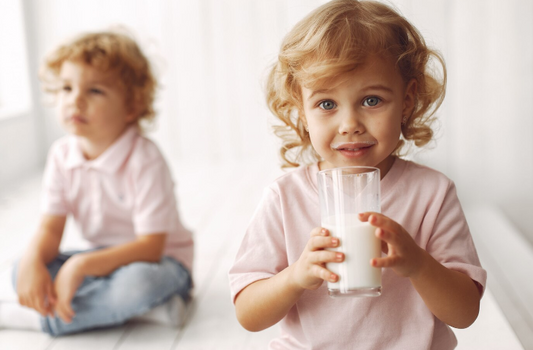Isn't it funny how we all assume bonding with your baby is something that just happens naturally? The truth is, it can feel like the most natural yet overwhelming thing in the world. So, what's the secret to making the most of your time together?
Building a strong and loving bond with your baby is super important and can last a lifetime. It's all about doing things that bring you closer, like snuggling skin-to-skin, making eye contact, and chatting away with your little one.
In this in-depth guide, we're diving into the science behind bonding with your baby and sharing some easy tips to help you strengthen that special connection. From the nitty-gritty of psychological studies to fun bonding activities, we've got you covered!
The Lowdown on Bonding with Your Baby
When you bond with your baby, it's like this awesome biological dance that happens between you two. These interactions trigger the release of cool hormones like oxytocin, also known as the "love hormone" (source).
Oxytocin is like the magic potion that creates those warm and fuzzy feelings of attachment, which is why people rave about bonding. And get this - it happens not just between moms and babies but dads too. Plus, parents get a hit of oxytocin every time they hang out with their little munchkin (source). How cool is that?
How Many Interactions Does a Baby Need for Healthy Growth?
You know how it goes – the more a parent engages with their baby, the tighter the bond they form. While this might seem obvious, it's reassuring to see it backed up by research!
A study revealed that moms who had more interactions with their little ones had a stronger bond, especially those who breastfed (source). But it's not just about the number of interactions – quality matters too. Babies pick up on subtle cues like facial expressions and tone of voice. So, even when you think they're not paying attention, trust me, they are!
Positive interactions, such as smiles and gentle touches, are key for building a strong bond. On the flip side, negative interactions like shouting and rough handling can harm the connection. So, a little kindness goes a long way.
Parenting Behavior Affects Baby's Future Behavior
A recent study discovered that a child's ability to manage emotions later in life is linked to how well their parents handled things when they were babies. If the parents lacked self-control or disregarded the baby's cues, it showed up in the child's behavior down the line.
Conversely, parents who made positive changes in their parenting style often saw improvements in their child's behavior and early learning skills (source). The research is ongoing, but it's comforting for tired parents to know that their efforts pay off in the long run.
5 Easy Ways to Connect with Your Baby

Bonding with your little one is super important for their growth, but let's be real, it's not always a piece of cake. Sure, you love your baby to bits, but those heartwarming bonding moments don't always happen as soon as you'd expect.
When I became a parent, I was totally thrown off by the fact that they just let me leave the hospital with this tiny human. I mean, talk about pressure! How was I supposed to know how to do this whole parenting thing when I was still figuring it out myself?
If you're feeling a bit lost in the whole parenting journey, whether you're a rookie or a seasoned pro, these simple steps to bond with your baby will help you turn the theory into practice.
1 - Skin-to-Skin Contact
Getting cozy skin-to-skin with your baby is a super effective bonding method. It releases oxytocin and helps your baby regulate their body temperature and breathing, especially in the early months. Plus, it's a great way to calm a cranky baby and encourage breastfeeding.
Actually, babies who have skin-to-skin contact right after birth (you can request this at the hospital) tend to cry less, have better heart and lung stability, steady blood sugar levels, and better temperature control compared to those who don't get that immediate contact. You can keep up the skin-to-skin contact in different ways: holding your baby in just a diaper against your skin, wearing clothes that make it easy to snuggle skin-to-skin, or simply cuddling with your baby in just a diaper or comfy onesie.
Breastfeeding is another awesome way to keep up the skin-to-skin routine. It boosts closeness, provides nourishment, and helps with hormone regulation, temperature, and fussiness. If you're unsure about breastfeeding, just know that it's one of the best things you can do for both you and your baby!
2 - Eye Contact
Looking into your baby's eyes on purpose is a really easy but super effective way to connect. It helps your baby feel acknowledged and understood and can even boost their brainpower. Essentially, making eye contact is like saying, "Hey, I'm here to chat!"
At first, a newborn might spend a lot of time staring at your hair or forehead. Maybe it's because they notice the different colors or contrasts. But pretty soon, they'll start gazing into your eyes and trying out their own expressions, like wiggling their eyebrows and grinning.
A cool way to cheer on your baby is to lock eyes with them, say "Hello!" and start chatting away. You can even try copying their expressions to see if they copy yours back. It's a fun little game that helps tighten your bond!
Oh, and don't forget to be aware of how much time your baby sees you glued to a screen. Being glued to your phone can make you less tuned in to your little one. So, if your baby is trying to chat with you while you're glued to your phone, not paying attention can feel like a brush-off—it's like your phone is more important than them.
3 - Chit-chat and Croon to Your Baby
Babies adore the sound of their parents' voices, so having a chat and belting out a tune to your baby is a lovely way to connect. Your little learner is absorbing everything you do, so singing and talking to your baby is great for their speech skills too!
You don't have to be a pro singer or master storyteller to engage your baby in this way. Just chatting about your daily activities, commenting on what your baby is up to, or humming lullabies all contribute to building a strong bond.
4 - Babywearing
Wrapping your baby in a sturdy carrier or sling is a handy way to bond while still having your hands free. It encourages skin-to-skin contact and gives your baby a sense of security, coziness, and closeness to you. Plus, it allows your little one to sit up and explore the world!
With so many baby carriers and slings out there, it can be a bit overwhelming to find one that suits you and your baby. You can check out baby consignment events like Rhea Lana's or second-hand stores to test out different carrier options.
It's also not a bad idea to have a couple of different types to accommodate changes in your baby's weight, preferred position, and height in the first year.
For instance, I used a cloth wrap when carrying my babies before they could sit up on their own. Around five months old, I switched to a carrier with a seat to distribute weight off my upper back. My little ones enjoyed facing forward in that one, but the seatless carrier worked better when I needed to carry them on my back.
5 - Play and Exploration
Spending time playing and goofing around with your little one is a great way to connect with them in the long run. Showing them the world through play is not only fun but also helps them learn and develop their cognitive and motor skills.
From the time they are newborns, babies start playing by doing things like tummy time, grasping toys, and mimicking faces. Being there with them during these play sessions is a great way to strengthen your bond.
As your baby grows, you can bond even more by reading books, singing songs, exploring outside, trying new foods, and playing games like peek-a-boo. Joining in on their activities helps them feel loved and understood, which in turn strengthens your bond and helps them develop important skills.
Baby Sensory Activities
Baby playtime activities are an awesome way to connect with your little one while aiding in their growth and development. These activities encourage your baby to discover the world around them and their own abilities through their senses (sight, hearing, taste, smell, and touch).
When you think about all the different skills a baby has to pick up before they reach the toddler stage, it can feel overwhelming. Luckily, the pressure isn't on you to ensure your baby hits all these milestones. Your role is to provide them with a safe space and time for exploring and practicing.
Some of the skills most babies work on in their first year include:
- tracking movement with eyes
- opening hands at will
- grasping objects
- bringing objects to mouth
- smiling
- pointing to objects
- holding head up and steady
- sitting without support
- looking for items that fall out of sight
- following interesting sounds
- rolling over in both directions
- getting onto hands and knees
- rocking and crawling
- cruising and walking
- experimenting with syllable sounds in babbling
- passing objects from one hand to another
- stacking objects
- recognizing their name
- following simple instructions
- playing simple games like peekaboo
Not every baby will hit or even start trying all the skills on this list before their first birthday, but the basic wiggles, movements, and babbling your baby naturally wants to practice should be encouraged.
Pediatricians keep an eye out for cognitive, physical, and emotional milestones at each visit. We talk about what these milestones are in 7 Things Every Parent Should Know About the Early Stages of Child Development. Take a peek at those cool charts!
Examples of Baby Sensory Activities

Baby sensory activities don't need to be fancy or planned out. That little brain can turn almost anything into a chance to learn, so you just have to offer something new to explore every day and enjoy some bonding time.
For instance, tummy time is a sensory activity that you can mix up by using different blankets or mats. After a few weeks, you can introduce a toy or two within reach for your baby to focus on and try to grab.
Once he can prop himself up on his elbows with ease, you can place fun toys just out of reach to encourage some wiggling, scooting, and rolling.
Taking a stroll outdoors also stimulates your little one's senses, especially if you let him see and touch different textures (grass, tree bark, flowers). Another popular baby sensory activity is bath time. Feeling the water's warmth, splashing around, and watching toys float are all captivating for little minds.
Playing music, flipping through baby books, and chatting about what you see at home are also sensory activities you can enjoy with your little one. Basically, anything you do together--no matter how routine for you--is a chance for your baby to learn.
You are shaping your little one's world, so involve him in your activities, talk to him, and let him explore toys and household objects. Baby sensory activities are a wonderful way to connect with and teach your baby!
To put it simply,
bonding with your baby is super important and has a huge impact on their overall well-being. Understanding the science behind bonding and following these practical tips will help strengthen your bond and create a strong connection that will last a lifetime.
Make sure to cherish the moments you have with your little one because time flies by so fast. Today is the day to connect, don't put it off until tomorrow. Spending quality time with your baby is way more fulfilling than scrolling through social media.
The time you invest in bonding now sets the stage for a solid relationship in the future. Building a strong connection early on will pay off for both of you down the road. What are some of your go-to bonding activities with your baby?




